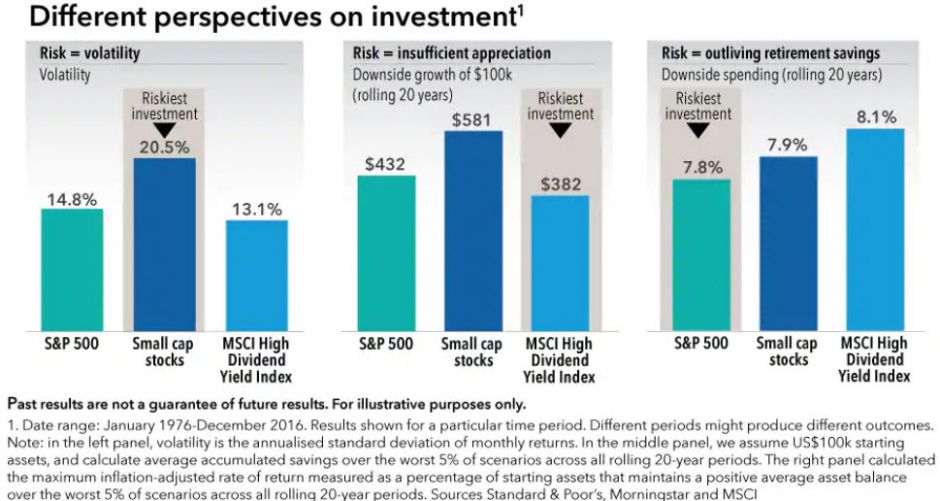
Capital Group: What is investment risk?
It depends how you look at it. Risk is traditionally measured as annualised volatility of monthly returns. However, investors should not just consider risk through the lens of volatility, but also in context of the likelihood of not meeting one’s investment goals.
18.01.2019 | 09:38 Uhr
The charts below highlight that a simple question — what’s most risky — might have a surprisingly nuanced answer depending on the investment and savings goals of an investor. For example, someone who is seeking to build wealth with a 30-year time horizon will consider risk differently to an investor looking to preserve wealth that they have already accumulated.
The charts provide a highly simplified example using long-term historical results for three different stock indexes in the US: a large-cap index often used to represent ‘the market,’ a small-cap index, and a dividend-payers index, all measured over 40 years.

The chart on the left shows that small-cap stocks had the highest annualised volatility and so might be considered most risky.
Consider a worker seeking to invest US$100,000 towards their retirement in 20 years. Her greatest fear is that of insufficient capital appreciation, and therefore she seeks the maximum growth in her investment. She should not be worried about volatility until nearing retirement. In the centre chart above, we calculated the average accumulated savings in the worst 5% of all rolling 20-year periods (from 1976 to 2016). This lens suggests that the small-cap investment was the least risky, as it returned approximately US$581,000 over the least favourable 20-year periods. The dividend-payers index, in contrast, generated only US$382,000, on average.
Finally, consider an older retiree seeking the greatest degree of sustainable spending over a 20-year period. This investor might perceive the dividend-payers index, at a return of 8.1%, to be the safest option, since it would support a higher maximum rate of return over these worst-case periods. The large-cap index would have been the least attractive investment for a retiree since the safest maximum withdrawal rate, 7.8%, was nearly a half a percent less per year than the dividend-payers option.
While conventional wisdom suggests that the broad, market-cap weighted portfolio is most diversified, it may not have the lowest risk for all investors. This highlights why it is important for portfolio construction to be considered in terms of client goals and not just considering one’s risk tolerance.




Diesen Beitrag teilen: